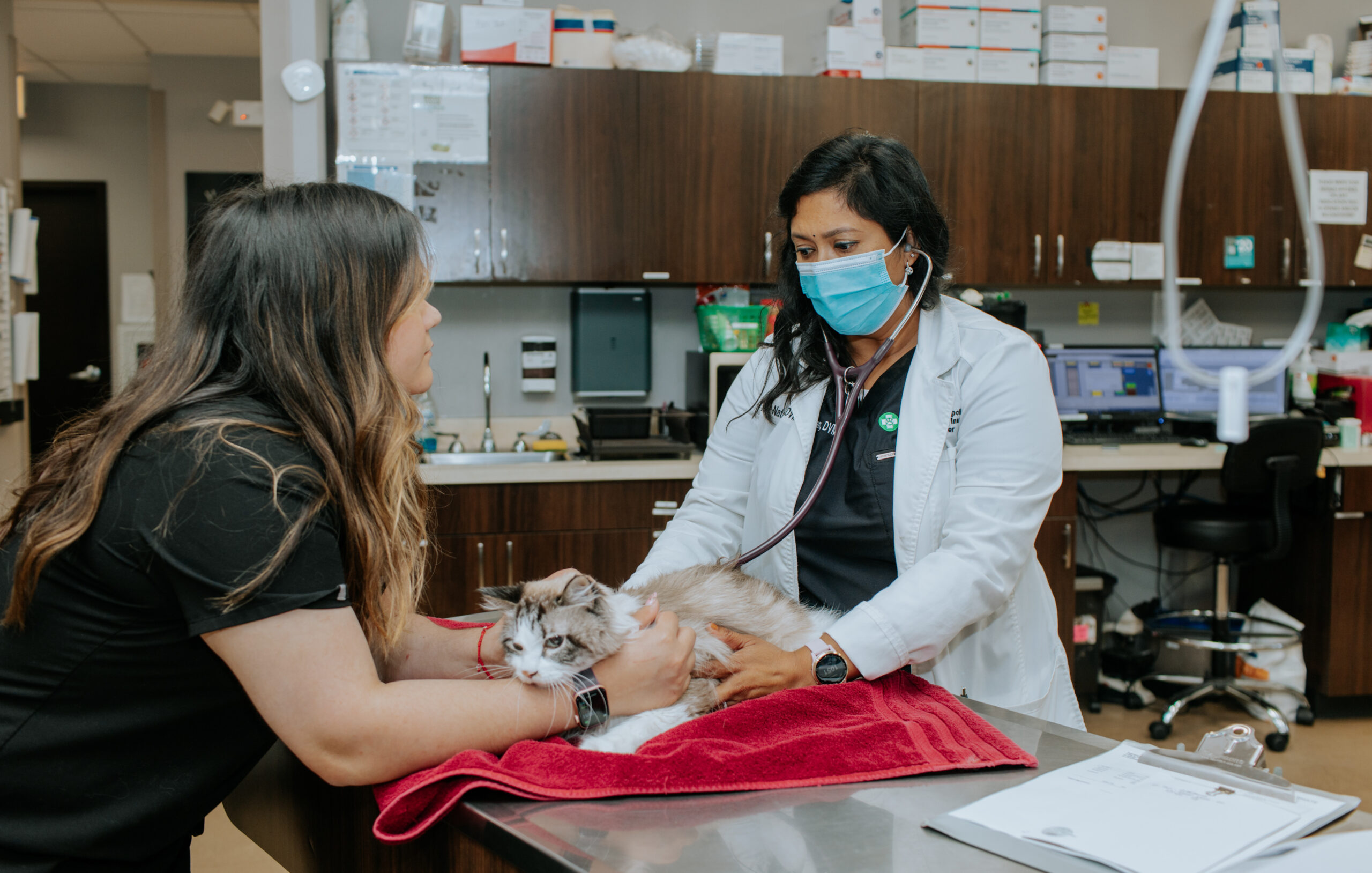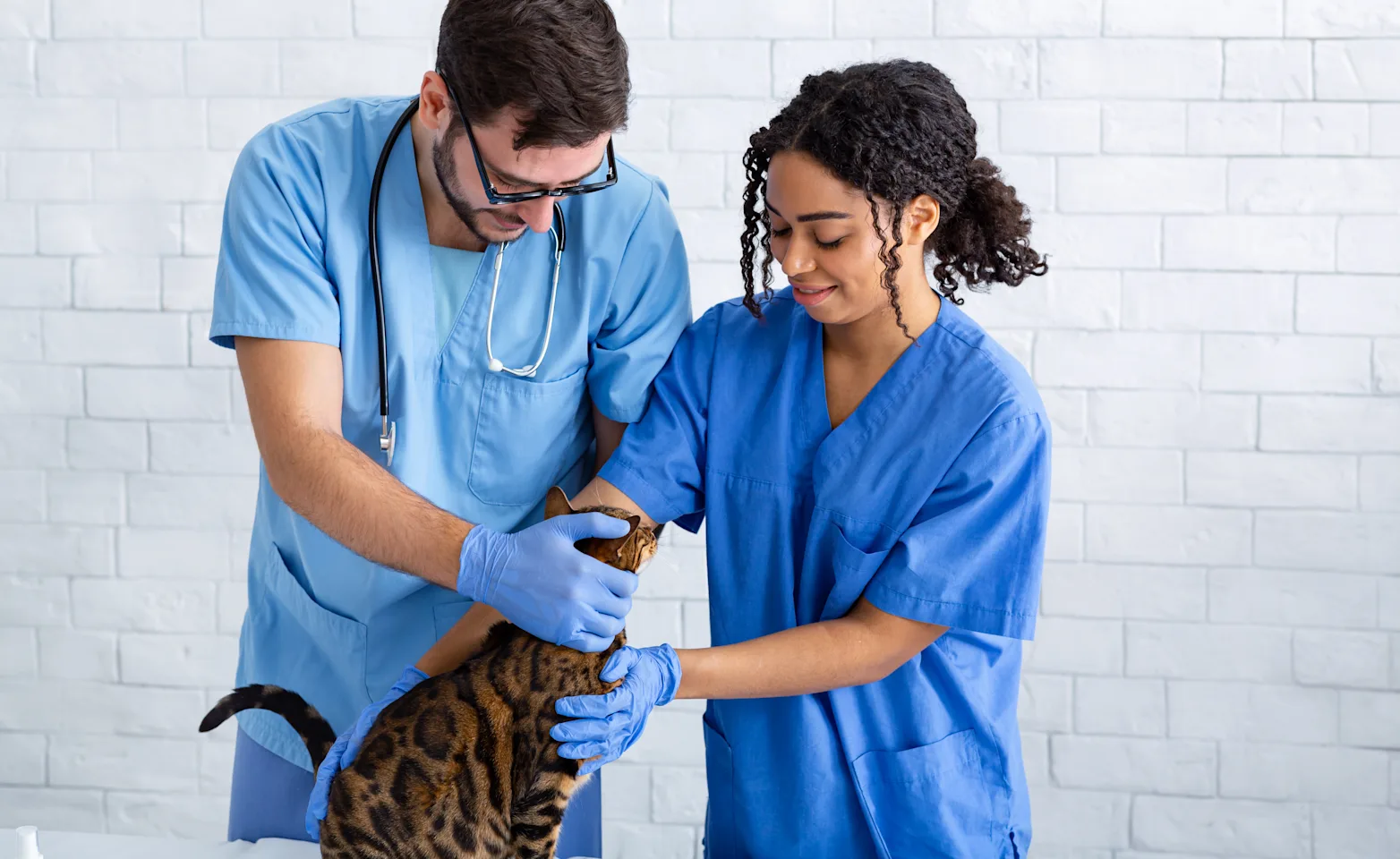When Every Second Counts: How an emergency vet Can Make All the Difference
When Every Second Counts: How an emergency vet Can Make All the Difference
Blog Article
Why Pet Rehabilitation Is Crucial: the Advantages of Vet Solutions for Your Pet dog's Recuperation
Pet rehab is a necessary component of recovery for pet dogs facing injuries or disabilities. Vet solutions supply vital support with tailored recovery plans that resolve private needs. These strategies often include pain monitoring, physical therapy, and nutritional guidance. Understanding the numerous facets of animal rehab can brighten its relevance in boosting healing results. What specific advantages do these solutions provide, and how can they transform a pet's healing trip?
Understanding Animal Recovery
Pet rehabilitation includes a variety of healing techniques focused on restoring the wellness and performance of injured or disabled animals. This field incorporates numerous strategies, consisting of physical treatment, hydrotherapy, and job-related therapy, tailored to meet the particular needs of each pet. Rehabilitation experts examine a pet's problem, creating individualized treatment plans that may involve exercises to strengthen muscles, enhance wheelchair, and enhance general well-being. The process not only focuses on physical healing but also addresses emotional and behavioral elements. Pets typically experience tension and anxiety complying with an injury, making mental health and wellness considerations necessary in rehab. By developing a helpful setting, specialists can help pets regain their confidence and adapt to their new conditions. Through routine sessions, animals can experience considerable enhancements, eventually bring about a far better lifestyle. On the whole, recognizing animal rehab highlights its value in advertising recuperation and improving the bond between pet dogs and their proprietors.
The Duty of Discomfort Management in Healing
How vital works pain administration in the recuperation of injured pets? It plays a vital role in assisting in recovery and enhancing the general wellness of pets. Correct pain management not just eases discomfort but also promotes flexibility, enabling animals to take part in rehabilitation tasks essential for recuperation. When pain is properly taken care of, animals tend to react favorably to therapy, bring about quicker rehab outcomes.Veterinarians make use of various methods to evaluate and attend to discomfort, including medications, acupuncture, and alternative therapies. By customizing discomfort monitoring strategies to the private needs of each pet, veterinarians can assure that pets continue to be calm and participating throughout their healing trip. Lessening discomfort aids decrease stress and anxiety, which can prevent recovery and prolong recovery times. To sum up, effective discomfort management is important for boosting the recuperation process and enhancing the lifestyle for hurt pets.
Physical Therapy Techniques for Pet Dogs
Many physical therapy methods are available to assist in the rehabilitation of pets recovering from injuries or surgeries (tplo surgery for dogs). These strategies can boost flexibility, eliminate pain, and promote healing. Therapeutic exercises, for instance, assistance reinforce muscular tissues and enhance joint feature, enabling animals to reclaim their physical capabilities slowly. Hand-operated therapy, that includes massage and mobilization, can reduce tension and boost blood circulation, adding to a much faster recovery.Other techniques such as easy variety of movement workouts motivate joint adaptability and lower rigidity. Additionally, electrical excitement treatment may be utilized to boost nerves and muscles, promoting recovery and pain relief.Veterinary specialists commonly tailor these techniques to every family pet's certain demands, making sure a comprehensive rehabilitation plan. By executing these physical therapy methods, family pets can experience better top quality of life and an extra successful healing from their disorders. The combination of these practices into rehabilitation programs is essential for excellent healing end results
Benefits of Hydrotherapy for Rehabilitation
Hydrotherapy supplies considerable benefits in animal rehabilitation, specifically in improving flexibility. This water-based treatment advertises pain relief while providing comfort to injured or recouping pet dogs. Additionally, it helps with strength-building exercises that contribute to general physical healing.
Improved Mobility Renovation
As pets recover from injuries or surgical treatments, improved wheelchair frequently becomes a primary objective of their rehab. Hydrotherapy functions as an important tool in achieving this objective. Via water-based workouts, animals can participate in low-impact activities that facilitate joint mobility and reinforce muscular tissues without the tension of weight-bearing activities. The buoyancy of water supports their bodies, allowing for raised variety of activity and wheelchair improvement. Furthermore, hydrotherapy encourages far better equilibrium and sychronisation, which are crucial for recovering normal movement patterns. Regular sessions can cause substantial progress in a pet's physical capacities, ultimately boosting their lifestyle. This approach not just aids in recovery but likewise advertises a much more active and satisfying lifestyle post-rehabilitation.
Discomfort Relief and Comfort

Alleviation from discomfort is a vital facet of pet rehab, and hydrotherapy significantly adds to this procedure. By using water's buoyancy, hydrotherapy decreases joint stress and reduces discomfort during movement. This restorative approach supplies a soothing environment where animals can participate in gentle workouts without the complete weight of their bodies impacting their recuperation. The cozy water boosts blood circulation, promoting recovery while additionally encouraging relaxation. Additionally, hydrotherapy sessions can be tailored to satisfy the details needs of the pet, making sure perfect convenience. As pet dogs experience decreased pain and raised comfort levels, their total desire to take part in recovery activities often enhances, bring about a more effective healing journey. Consequently, hydrotherapy acts as a vital tool in improving pain relief and convenience throughout rehabilitation.
Strength Building Exercises
Strength-building workouts play an important duty in the rehabilitation process, with hydrotherapy offering one-of-a-kind benefits. This kind of treatment makes use of water resistance to enhance muscle mass toughness without putting too much strain on the joints. The buoyancy of water sustains the animal's weight, permitting safer movement and boosted range of activity. Furthermore, hydrotherapy can boost cardio health and wellness and advertise overall fitness, assisting in much faster recovery from injuries or surgeries. The controlled setting also reduces the risk of reinjury, making it an ideal alternative for pet dogs needing rehab. Normal hydrotherapy sessions can cause recognizable renovations in wheelchair, strength, and endurance, eventually click here enhancing the pet dog's quality of life and capability to go back to typical activities.
Importance of Personalized Rehabilitation Strategies
Customized rehab plans are crucial for addressing the unique demands of each pet, ensuring individualized treatment approaches. These plans permit reliable progression monitoring and needed adjustments, cultivating optimal recuperation results. Furthermore, a holistic approach can boost the overall well-being of the animal, promoting a much more thorough rehab experience.
Individualized Treatment Approaches
While numerous recovery programs adopt a one-size-fits-all strategy, the unique requirements of each pet demand customized treatment strategies for excellent recuperation. Customized rehab strategies take into consideration various aspects, consisting of the pet's species, age, case history, and particular injuries or problems. By customizing treatments, vets can attend to each pet dog's special obstacles, optimizing the effectiveness of the rehabilitation process. Individualized strategies may include various methods such as physical therapy, hydrotherapy, and therapeutic workouts, guaranteeing that the therapy straightens with the animal's capabilities and progress. In addition, personalized techniques foster a stronger bond between the pet dog and the caretaker, promoting an extra engaging and supportive recovery atmosphere. Eventually, individualized therapy is crucial for accomplishing finest possible end results in pet rehabilitation.
Development Tracking and Adjustments

Holistic Recuperation Methods
Holistic recovery approaches are necessary for effective animal rehab, as they emphasize the importance of individualized therapy strategies customized per animal's details demands. This approach takes into consideration the physical, psychological, and environmental factors impacting recovery. Personalized rehab plans may consist of a combination of physical therapy, dietary counseling, and behavior modifications. By resolving these varied elements, vets can boost the total health of the animal and advertise a faster recuperation. Such customized approaches facilitate a deeper understanding of the family pet's distinct difficulties, leading to much more efficient interventions. Eventually, alternative recuperation approaches not only improve physical health however also add to the animal's psychological and psychological stability, making sure a detailed recovery experience.
The Effect of Nourishment on Healing
Nutrition plays a vital role in the recovery process for refurbishing pets, often determining the rate and effectiveness of healing. A healthy diet plan offers the necessary nutrients that support tissue repair work, enhance the body immune system, and enhance general vigor. Protein is specifically essential, as it helps in muscular tissue restoring and recuperation from injuries. Vital fats, vitamins, and minerals additionally contribute to decreasing swelling and advertising optimal cellular function.Veterinarians regularly emphasize the significance of tailored nutrition strategies, taking into consideration each animal's certain demands, age, and wellness condition. Proper hydration is equally essential, as fluids facilitate nutrient absorption and assistance in detoxification. By making certain that pets receive appropriate nourishment, caregivers can significantly boost their chances of an effective recuperation, resulting in better long-term wellness results. Ultimately, nourishment works as a fundamental component in the rehab journey, supporting pets in reclaiming toughness and resilience post-injury or health problem.
Success Stories: Pets Who Grew After Recovery
Successful rehab tales abound, showcasing the strength of animals that have actually overcome significant challenges. Take, as an example, Bella, a golden retriever who suffered serious injuries from an automobile accident. With dedicated veterinary treatment and an extensive rehabilitation program, she restored her flexibility and returned to her lively self, much to her owner's pleasure. Similarly, Max, a senior feline diagnosed with joint inflammation, experienced exceptional renovation through a mix of physical treatment and discomfort management. His newfound dexterity permitted him to enjoy his favorite sunbathing areas once again. An additional inspiring case is that of Coco, a saved greyhound who overcame anxiety with habits modification and socialization strategies, enabling her to thrive in her new home. These success stories exemplify the transformative power of animal rehabilitation, highlighting that with the right support, family pets can not only recover however lead fulfilling lives, enriching the bonds they share with their family members.
Regularly Asked Concerns
Just how Long Does the Recovery Process Usually Take for Animals?
The rehabilitation procedure for pet dogs generally differs based on the injury or problem, varying from a few weeks to numerous months. Individual development, therapy type, and commitment to workouts considerably affect the general duration of healing.
Are There Any Kind Of Threats Connected With Animal Rehabilitation?
Pet rehabilitation may carry dangers such as exacerbation of injuries, improper strategies causing discomfort, or insufficient monitoring during recovery. These factors can impede development and influence the overall performance of the recovery process.

Can All Pets Take Advantage Of Rehab Solutions?
Not all pet dogs may require rehab, yet lots of can benefit significantly. Rehab services can boost movement, alleviate pain, and improve overall well-being, particularly for those recovering from injuries, surgical procedures, or persistent problems.
How Can I Prepare My Family Pet for Recovery Procedure?

What Signs Indicate My Family Pet Requirements Rehabilitation?
Signs indicating a pet may need rehabilitation include problem strolling, limping, reduced task degrees, unwillingness to jump, or indicators of pain. Observing these habits can motivate proprietors to seek expert examination and treatment for their animals.
Report this page